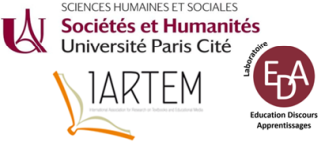Teachers have to be the opportunity to make pedagogical decisions. There are non-negotiable decisions related to the learning process laid down by the state's education policy, such as national curricula and educational policy documents. Some decisions teachers can make independently. Teachers' consciousness of the decision-making process is essential because it can impact pupils' learning outcomes (Lloyd, 2019). There are different models for studying the pedagogical decision-making process. One way is to use Bronfenbrenner's (1979) Ecological Model, which offers a multi-level framework for the research of factors influencing teacher decisions, including the choice of learning materials. Decisions at the macro-level are related to legislation, for example to what extent the curriculum gives the teacher freedom to choose the learning material. Meso-level decisions are connected to the people around the teacher, where teachers can be influenced by the needs of pupils, opinions of parents, and collegial recommendations. Micro-level decisions result from the teacher's professionalism, including teaching experience and knowledge about learning material selection (Reichenberg & Andreassen 2017), as well as teacher education.
Factors influencing teachers' decisions have been examined previously from various perspectives in extant research, e.g., how teachers make pedagogical (Lloyd, 2019) or curriculum-related (Siuty et al., 2018) decisions and differences in teachers and principals' perceptions of teacher involvement in decision-making have been identified (Brezicha et al., 2019). However, little is known about how decisions are made when choosing learning materials. The myriad learning materials available make decision-making difficult and time-consuming, which is why teachers tend to choose learning materials without reflection. However, making conscious choices is important, but research about the factors that influence teachers' decisions remains scarce. Therefore, this study aims to examine Estonian preschool and primary school teachers' participation in the selection of learning materials, including the factors that influence teachers' decisions when selecting these materials, based on two research questions:
(1) What decision-making opportunities do Estonian preschool and primary school teachers have in selecting learning materials?
(2) Which macro-, meso-, and micro-level factors influence the selection of learning materials in the opinion of preschool and primary school teachers?
The sample, comprising nine preschool and 10 primary school teachers, was characterized by two criteria. First, teachers were selected from educational institutions that functioned as bases for teacher traineeship, and second, all teachers had experience teaching either preschool or primary school children. In this study, preschool teachers were defined as those who teach children ages 6–7 (the last year before attending school), and primary school teachers were defined as those who teach pupils ages 7–10. Data were collected through semi-structured interviews using 12 main questions based on two research questions. A qualitative content analysis was conducted on the interviews, which remained open to forming codes, categories, and subcategories.
Teachers' decision-making power and ability to choose learning materials are important competencies, as their decisions affect pupils' learning. Based on Bronfenbrenner's ecological model, it was discovered that the factors affecting the autonomy of teachers' decision-making belong to the meso- and micro-levels. School administrators and the level of autonomy within institutions affect decision-making opportunities. Macro-level factors, e.g., national regulations, exerted no effect. Simultaneously, it was discovered that all three levels from Bronfenbrenner's model – macro-, meso-, and micro-level factors – affect how teachers choose learning materials. It appeared that curriculum, publishers, and finances influence teachers' choices at the macro level. Various parties – e.g., school administrators, colleagues, and pupils – affect teachers' decisions at the meso-level, and teachers themselves are the main influencers at the micro level. When teachers have the opportunity to participate in the selection of learning materials, decisions are made based on experience and knowledge, as well as pupils' needs.
References
Brezicha, K. F., Ikoma, S., Park, H., & LeTendre, G. K. (2019). The ownership perception gap: Exploring teacher job satisfaction and its relationship to teachers and principals' perception of decision-making opportunities. International Journal of Leadership in Education, 23(4), 428–456. https://doi.org/10.1080/13603124.2018.1562098
Bronfenbrenner, U. (1979). The ecology of human development: Experiments by nature and design. Harvard University Press.
Lloyd, C. A. 2019. “Exploring the real-world decision-making of novice and experienced teachers.” Journal of Further and Higher Education. 43(2): 166-182.
Reichenberg, M., and R. Andreassen. 2017. “Similar but not the same: Comparing Norwegian and Swedish teachers' influence on textbook selection and involvement in text discussions.” IARTEM e-Journal 9(1): 4–27. https://doi.org/10.21344/iartem.v9i1.596
Siuty, M. B., M. M. Leko, and K. M. Knackstedt. 2018. “Unraveling the Role of Curriculum in Teacher Decision Making.” Teacher Education and Special Education 41(1): 39–57. https://doi.org/10.1177/0888406416683230

 PDF version
PDF version
